
Two years ago, New York City-based photographer Annie Tritt embarked on a new project photographing trans and non-binary youth. Transcending Self was born, and the Facebook and Instagram pages now have tens of thousands of fans around the world.
“I wanted to focus on what it means to live an authentic life; to know what it looked like and felt to be yourself wholly,” she told Queerty about her initial inspiration to begin the project.
Then something unexpected happened — what began as an outward exploration of identity turned inward. “I did not see how this project interacted with my own life until two years in. In a way, I was trying to make sense of my own life,” she said, adding that “I now see as a queer person who’s gender never fit neatly in a box how the messages I got as a young person are still affecting my life, and I am unpacking that now.”
And the community she’s building is affecting real, positive change.
How about we take this to the next level?
Our newsletter is like a refreshing cocktail (or mocktail) of LGBTQ+ entertainment and pop culture, served up with a side of eye-candy.

“I believe the project chose me, as corny as that may seem. I put so much time into this project because it matters. Trans youth have a suicide attempt rate of close to 50%, yet when they are supported it drops to closer to that of their peers. This is based on fear. And preventable.”
We caught up with Annie to find out more about the project and her experience using Facebook and other social media to build community around it.
Included are some of her stunning photos — you can check out more here.
What do you think has changed, if anything, about the public’s understanding of gender in the time since you began the project?
Things have changed greatly. There is so much more understanding and acceptance, and for that, I am so grateful and optimistic. Transgender officials were elected around the county in this last election, there is more positive work in the media, but this year was the most deadly on record for transgender people, and that is not a coincidence. There is still much to do.
What’s the biggest change you’d like to see?
I’d like for people be able to be their true gender ideally as soon as they figure it out. I’d love for it to be a non-issue. I’d love for youth and adults to be able to use the bathroom of their gender ID without question and for there always be a gender-neutral bathroom.
Your photos are so intimate and vulnerable — do you find that folks are eager to share their personal stories or does it take some coaxing?
Thank you. That is what I want. I really do not coax anyone. What I think I do is build trust. I am just kind of an open book sometimes, and I believe that my vulnerability helps other feel safe too.
Also, I want to know; I am really interested, and that makes people comfortable too. I spend a lot of time with people and make sure that they are part of the process of creating the image.
It can be so isolating to grow up feeling different — what do you hope non-binary youth will take away from this project?
Yes, it can. I hope that these youth will learn that they are not alone. That while the world tells them to doubt themselves; they see it is the world that is wrong. That the stories are part of what gives them the self-love and courage to be who they are in the world. That they see their beauty as a gift maybe even learn to love themselves. That people are judged on the content of their character. That little children when they say that they are a boys are believed. That no small child is ever made to feel like their thoughts and feelings are wrong or invaluable, and moreover that they are embraced and loved for being who they are in public. That is a lot.

What has surprised you the most about meeting all these incredible young people?
I had no idea that this project would change my life. I am in awe of the compassion and creativity I have witnessed in almost every youth. I am wowed by their bravery and sureness of self.
And what about their families?
I have seen so much compassion. I See parents really listing to their kids. I see parents fighting for their children’s rights.

How did you decide to use Facebook to amplify your work, and what has it been like to get the instantaneous response that comes with a social media presence?
I set out to share the stories of this community at a time when the media was not talking about transgender people and even less about transgender children. I chose to use a Facebook Page and Instagram to ensure that the project was interactive, and with time has formed a positive, supportive and safe space where people ask questions, connect and function as “a community beyond the photos.”
It is great for the youth to see the positive response and love. And for everyone to be able to connect.

Tell us about your fundraising efforts — where do you hope to take Transcending Self?
So far I have paid largely for the project myself, investing a significant amount of my time and money
I have over 50 youth waiting to participate. I want to make the project as diverse as possible, regarding gender ID, race, location, class, religion and experience. This way everyone will see themselves reflected. This is key.
The final goal is a book, website and exhibitions. People can help with even the smallest donation.
In your mind, what makes a great portrait?
I wish I knew the answer to that. I think that there are so many great portraits and each person is different. For me, it is of course light and composition, but also a feeling. I want the viewer to feel a connection and caring for the person in the image. I want it to be like an invitation to connect and care about the person.


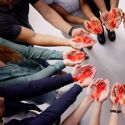
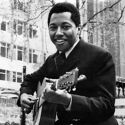



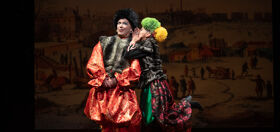

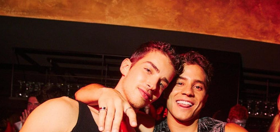



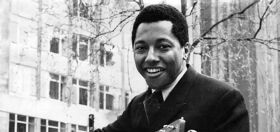




KaiserVonScheiss
These are kids…
Why are you glorifying this? Are these kids on hormones? Do you know how damaging that is? What if these kids change their minds later?
They are just kids with very little life experience. This is incredibly dangerous. And, no, don’t you for one second call it ‘transphobic’ to say there is legitimate concern about doing this to children. They are young and impressionable with no real life experience to speak of. This is a very serious thing.
StormRoyale
As a physician who specializes in trans healthcare, you have no idea what you are talking about. Prepubescent children are never given hormones. Teens need to go through lengthy therapy before any hormones are given. And finally, it’s very rare for someone to go through with transitioning and later regret it.
Be informed before you speak.
In the age of information, ignorance is a choice.
mhoffman953
@StormRoyale
“Prepubescent children are never given hormones”
That’s actually a lie. I did a quick Google search and the first story that came up was about this boy: http://www.dailymail.co.uk/news/article-2043345/The-California-boy-11-undergoing-hormone-blocking-treatment.html
Plus there is that Jazz kid from the TLC show who started hormones at age 10, I believe.
Also according to a real scientific journal study: http://journals.plos.org/plosone/article?id=10.1371/journal.pone.0016885 they found that 300 of 324 transgender participants regretted the surgery and were more susceptible to suicide, psychosis, or other psychiatric issues stemming from regret.
Maybe you should be informed before you speak and accuse others of being misinformed
gtmlosangeles
Living as your authentic self is glorious. Growing up gloriously is what we want for all of our kids. “Hormone blockers” sounds like hormones, but are NOT hormones. Hormone blockers are medicines that TEMPORARILY inhibit the bodies automatic production of sex hormones at puberty, thus harmlessly delaying some of the the physical changes that occur with puberty. Educate yourself – ignorance feeds bigotry. As a gay man, I know the harmful effects of knee jerk ignorant reactions. Font repeat history that harms others. Accept the support of trans children.
mhoffman953
@gtmlosangeles
So you think it’s okay to inject a 10 year-old with hormone blockers to delay him from experiencing puberty and experiencing natural physical changes in his body because he thinks he’s a girl at age 10?
Why don’t we just let 10 year-olds decide which vaccinations they want as well as consent to life altering decisions?
This is child abuse. The only argument being presented to counter that is “you’re a bigot!”.
Then you opened your response with, “Living as your authentic self is glorious”. That is true, which means if you were born as a boy, then you’re authentically a boy
Bob LaBlah
Mon Kaiser, on this one I agree with you. There are some places that needn’t be visited and trans-CHILDREN are one of those places in my book. This is just outright SMUT in my book.
candylaine
Danny595 sure is an expert, he did a google search! Wow!
I am so sick of the transphobic bigots who comment on this site. You think everyone should express their gender the same, but somehow difference is okay in terms of sexuality? I’m glad people express themselves differently in terms of gender, what a boring world it would be if everyone were the same!
And I really don’t care if trans issues aren’t the same as gay/lez issues, I stand with them as a fellow queer person. We need more togetherness and solidarity, not more divisiveness and shunning. Your transphobic comments are super counterproductive, but maybe that’s what they’re supposed to be (are you a russian bot? you might as well be).
Ummmm Yeah
And of course you use the slur queer. Just more erasure of all things gay and lesbian by these outsiders.
mhoffman953
@candylaine
I don’t know what links Danny595 posted because all of his comments are removed BUT how are people bigots for not wanting children to be pumped full of hormones at a young age when it will do irreversible damage?
Ummmm Yeah
Because anyone that doesn’t’ fall victim to the left wing extremists agenda is a bigot or racist or a racists bigot. Cause the SJW’s don’tt have any logical explanations for any of the BS they are trying to push on us.
candylaine
i’d much rather be someone in favor of social justice than someone who goes around making prejudiced generalizations about people. these kids aren’t necessarily on hormones. if you aren’t an actual trans person, then don’t try to speak for trans people. try listening for once.
candylaine
Ummmm Yeah:
you think “queer” is a slur? You’re on the website “Queerty,” FYI.
BTW it’s 2017.
gtmlosangeles
Yes, there is a lot of hateful trolling here. Thank you for calling it out. I am gay and I am queer. I stand with transgender and non binary children and adults living their authentic selves.
am_psi
Child services should just follow this photographer around collecting these kids.
Ummmm Yeah
Yes!
candylaine
to find what? kids dressing differently, acting differently, and parents being okay with that? are you planning on going around policing how everyone acts, making sure they conform to your expectations of “masculinity” or “femininity?”
read a book.
gtmlosangeles
As a gay child growing up in the 60s and 70s, I know how harmful bigotry fed by ignorance can be to a child’s development. Get educated. Trans children have been harmed for decades, but many families and most professionals understand that acceptance and support is crucial – literally life-saving. These children and families deserve every bit of support and any child protective service worthy of that label would he 100 percent behind these families.
gravityyaoi
No one here (as of yet) has exhibited transphobia. Concern for developing children is all I’ve seen. As someone who has dealt with hormone issues, I can tell you there were some days I could barely care for myself or even get out of bed and that wasn’t the mental and emotional strain, I couldn’t imagine what it would be like for a child. So I too share the concern but I don’t know these kid’s situations so I won’t judge.
That said, onto the art, I can barely tell any of these are trans kids (maybe that’s the point) but if hadn’t been told I would have never known. That kind of lessens the impact for me. Art shouldn’t have to be explained to understand the subject.
Danny595
lol. I posted a comment with no insults, profanity or uncivil language. It referenced actual statistics from peer-reviewed studies regarding “desistance” – the phenomenon whereby gender dysphoric youth see their problem resolve itself without medical intervention. You guys can just google that term and easily find the literature. But Dan Tracer deleted my comment. Why? Because trans activism can’t stand up to facts. It needs censorship, silence, and lies to prevail.
KaiserVonScheiss
Truth is hate speech in the Empire of Social Justice. Didn’t you get that memo.
gtmlosangeles
Those peer-reviewed articles about desistance have since been thoroughly debunked as shoddy science. Mistakes happen and scientists learn. The current state of the art agreed upon by the main bodies of professional psychology is that supporting children in finding their authentic self is not just helpful but life-saving.
Danny595
gtmlosangeles – I responded to you below, accidentally posting it under candylaine’s comment. In short, you’re a liar.
candylaine
expressing gender differently doesn’t necessarily mean someone is taking hormones or getting surgery. i know trans people who aren’t on hormones at all and haven’t had surgery, but that doesn’t mean they’re not trans.
Danny595
@candylaine – Thanks for illustrating my earlier point that trans activism depends upon lies in order to prevail. Desistance has not been “debunked.” These are recent studies and they all replicate the same finding: the vast majority of girls and boys who experience dysphoria will see that dysphoria go away on its own. In boys, desistance ranges from 77% to 94%. In girls, it ranges from 73% to 87%. To slap a transgender label on these children is unethical and cruel. But trans activists don’t care about children or their well-being. They only care about boosting their numbers and their PR. Sick.
Danny595
candylaine – Sorry, the comment above was intended to respond to gtmlosangeles.
Kangol
Candylaine expresses the reality of trans-ness beautifully. You do not have to be taking hormones or planning surgery for yourself; if you feel deep inside that you are a different gender (and this takes into account nonbinariness and fluidity) and are not cis, you can be trans. I used to be appalled by the amount of transphobia expressed in the Queerty comments section, but I quickly learned that it often goes hand in hand with the racism, misogyny, classism, and other forms of prejudice some posters harbor. The irony is that these very same transphobic Queerty posters, if they’re out gay men, would be very upset at being subjected to homophobia (even though some openly support homophobes and anti-gay politicians), but they can’t see the irony or hypocrisy.
mhoffman953
@Kangol
“You do not have to be taking hormones or planning surgery for yourself; if you feel deep inside that you are a different gender…you can be trans”
So if I think deep down inside that I am something, that means I am that thing. Can I think I’m black and magically become black? Can I think I’m an 8 year-old and suddenly, I’m 8?
I don’t think you thought that through before typing it